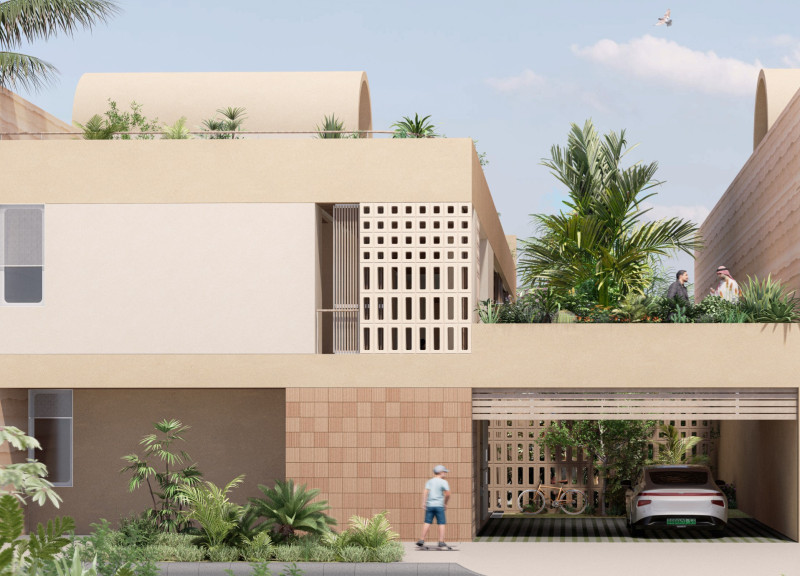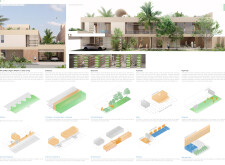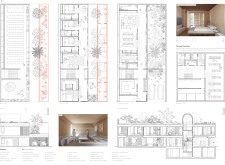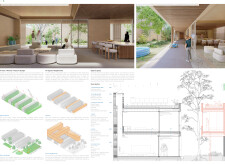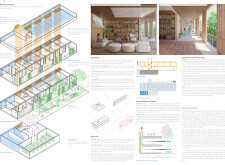5 key facts about this project
### Project Overview
Located in an arid climate, "THE LINES: Organic Rhythm in Urban Living" exemplifies a residential design that harmonizes modern living with natural elements. The project targets enhanced livability amidst environmental challenges by prioritizing sustainability, community engagement, and the integration of technology. The architectural approach emphasizes a balance between indoor and outdoor spaces, reflecting a commitment to improving both individual and communal experiences.
### Spatial Configuration
The design features a series of distinct zones that promote social interaction and privacy. Generously sized living spaces are complemented by abundant natural light from large windows, creating an inviting atmosphere while providing views of extensive green areas. A continuous playground integrates leisure and family activities, while multifunctional rooms offer versatility, adapting to residents' daily needs. The layout supports communal gatherings while ensuring personal retreat areas, fostering connections within the neighborhood through shared spaces.
### Material Selection and Sustainability
The choice of materials plays a crucial role in the project’s sustainability and energy efficiency. Key materials include rammed earth and clay block walls, which provide thermal mass and insulation with low environmental impact. Timber is used in structural components for its renewability, while photovoltaic panels facilitate partial off-grid energy operation. Movable sun screens adjust exposure based on sunlight, and the use of recycled materials serves to minimize waste. These selections collectively enhance the aesthetic appeal and contribue to a healthier indoor environment through resilient finishes and improved air quality.


